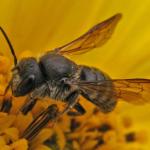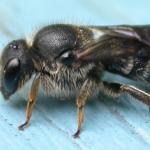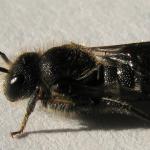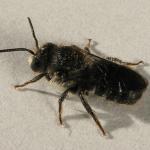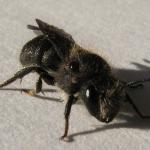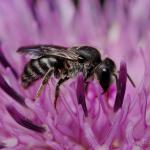Apis stigma CHRIST 1791; Apis aterrima CHRIST 1791; Stelis meridionalis POPOV 1932; Stelis murina PÉREZ 1884; Stelis cassiopaea SAUNDERS 1908
Since recording began this has always been considered a rare cleptoparasitic bee, but during this century it has decreased alarmingly.
Formerly widely distributed in England, mainly south of a line extending from the Severn to the Wash, with additional records from Monmouthshire (Hallett, 1956). Recent records are only from a few scattered localities in England (especially in Devon) and south Wales. The reason for the decline is unknown. In Europe, the species is found from southern Finland to Greece, and into Asia It also occurs in North Africa (Morocco).
Listed as Rare (RDB3) by Shirt (1987). Provisionally listed as Vulnerable (pRDB2) by Falk (1991). Owing to the paucity of recent records, the status should be reviewed.
Many of the modern Devon records are of bees flying about or alighting on cob walls, these perhaps containing the nest burrows of its host species (megachiline bees).
Univoltine; from late May to mid August (rarely September).
The host species of this Stelis have not been confirmed for Britain. Jones (1932) removed a female S. phaeoptera from a nest burrow of Osmia leaiana at Wicken Fen, Cambridgeshire. However, other megachiline species may also be hosts of this cleptoparasite in Britain.
Bird's-foot-trefoil (Lotus corniculatus), field scabious (Knautia arvensis), hawkweed (Hieracium sp.), spear thistle (Cirsium vulgare) and speedwell (Veronica sp.).
No information available.
Profile written: 1998
Proofed: February 2012


